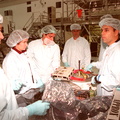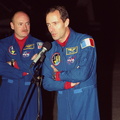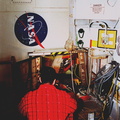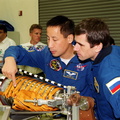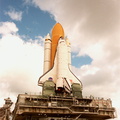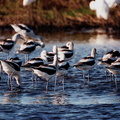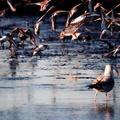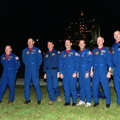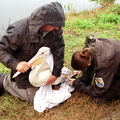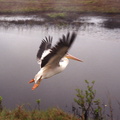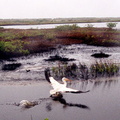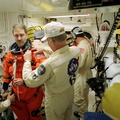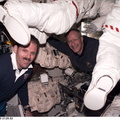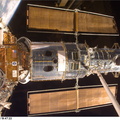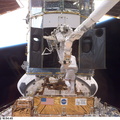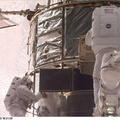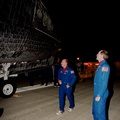
WIKIARCHIVES.SPACE
The Human Spaceflight Archive

This image of Jupiter's moon Io, taken by NASA's Galileo spacecraft on November 25, 1999, shows a bright lava flow with a distinct dark channel in the middle. This type of winding channel is a common sight on shallow slopes in lava flows on Earth that are moving fairly quickly. The serrated margins are characteristic of fluid lava that is able to work its way into every available nook and crevice. What is unusual about this lava flow is its bright color -- most lava flows on Io and the other planets are dark. This leads Galileo scientists to speculate that these lava flows are composed of sulfur, rather than silicate rock. The lava flow appears to emanate from a caldera named Emakong, which is just beyond the left edge of the picture.
Information
- Taken in
- Author
- NASA/JPL/University of Arizona
- Description
-
This image of Jupiter's moon Io, taken by NASA's Galileo spacecraft on November 25, 1999, shows a bright lava flow with a distinct dark channel in the middle. This type of winding channel is a common sight on shallow slopes in lava flows on Earth that are moving fairly quickly. The serrated margins are characteristic of fluid lava that is able to work its way into every available nook and crevice. What is unusual about this lava flow is its bright color -- most lava flows on Io and the other planets are dark. This leads Galileo scientists to speculate that these lava flows are composed of sulfur, rather than silicate rock. The lava flow appears to emanate from a caldera named Emakong, which is just beyond the left edge of the picture.
North is to the upper left of the picture and the Sun illuminates the surface from almost behind the spacecraft. The image, centered at -3.7degrees latitude and 117.4 degrees longitude, covers an area approximately 120 by 40 kilometers (75 by 25 miles). The resolution is 150 meters (500 feet) per picture element. The image was taken at a range of 15,000 kilometers (9,400 miles) by the camera onboard Galileo.
- Created on
- Friday 17 December 1999
- Albums
- US SPACE PROGRAM / PROBES / JUPITER / GALILEO / Mission Photos (Edited) / JUPITER / IO
- Source link
- https://photojournal.jpl.nasa.gov
- Visits
- 11
- Rating score
- no rate
- Rate this photo
- License
- Public Domain
- Modified by WikiArchives
- No (original)
- Downloads
- 1
Powered by Piwigo



















